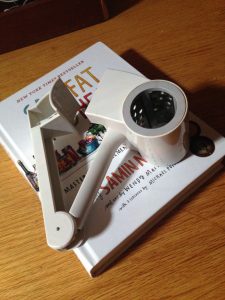The Power of Parmesan Cheese
Sam was very young when he discovered that Parmesan cheese made almost anything taste better, and it became a thing in our family.
We would tell the wait staff at Olive Garden, for example, to please leave the twirling grater at our table, because they had other tables to tend to and they didn’t need to spend all their time grating cheese for us.
(Now, foodie friends, please don’t judge. We were thrilled that (1) Sam finally could not only tolerate but enjoy a dinner out with the family and (2) the kids were asking to order things beyond a hamburger and fries.)
When Sam was little, he had distressing vomiting episodes. The doctors were no help. He eventually whittled his food choices to cold breakfast cereal with milk, morning, noon and night.
After a few years, we stumbled on the power of Parmesan. For Sam, the cheese was a gateway to trying other foods. Parmesan helped restore a balanced diet for him, including vegetables and salads. We didn’t blink at the amount of Parmesan that flowed. We even bought a twirling grater. On our family vacation in Germany last summer, we came across cheese mongers selling massive wheels of Parmesan and we teased Sam, “dude, that’s what you need to buy for a souvenir.”
I used to liken his preference to the way some people think everything tastes better with a little ketchup or mustard. For Sam, it was Parmesan, and we figured that was that.
 Then along came Samin Nosrat and Salt Fat Acid Heat. In her Netflix series, she talked about the first time she was a guest at a traditional Thanksgiving dinner and how she found herself slathering the cranberry sauce on everything because the meal lacked the acid her palate craved.
Then along came Samin Nosrat and Salt Fat Acid Heat. In her Netflix series, she talked about the first time she was a guest at a traditional Thanksgiving dinner and how she found herself slathering the cranberry sauce on everything because the meal lacked the acid her palate craved.
In the episode in Italy, she spent considerable amount of time exploring how Parmesan cheese was made and what powerful things it can bring to a dish–fat, acid, salt. She told viewers that good Parmesan should be among your kitchen staples.
No worries, Samin. We got a big check mark on that one in the kitchen at Chez Wolfe.